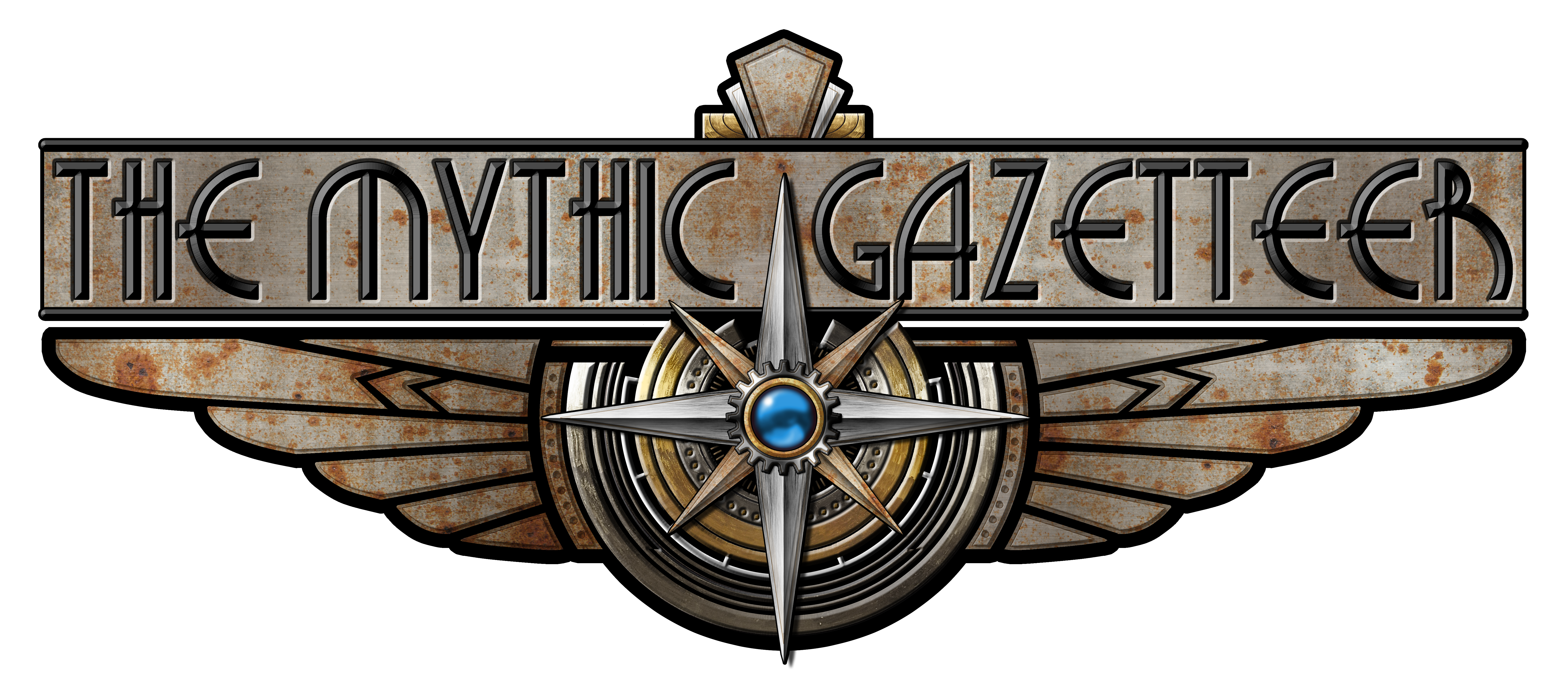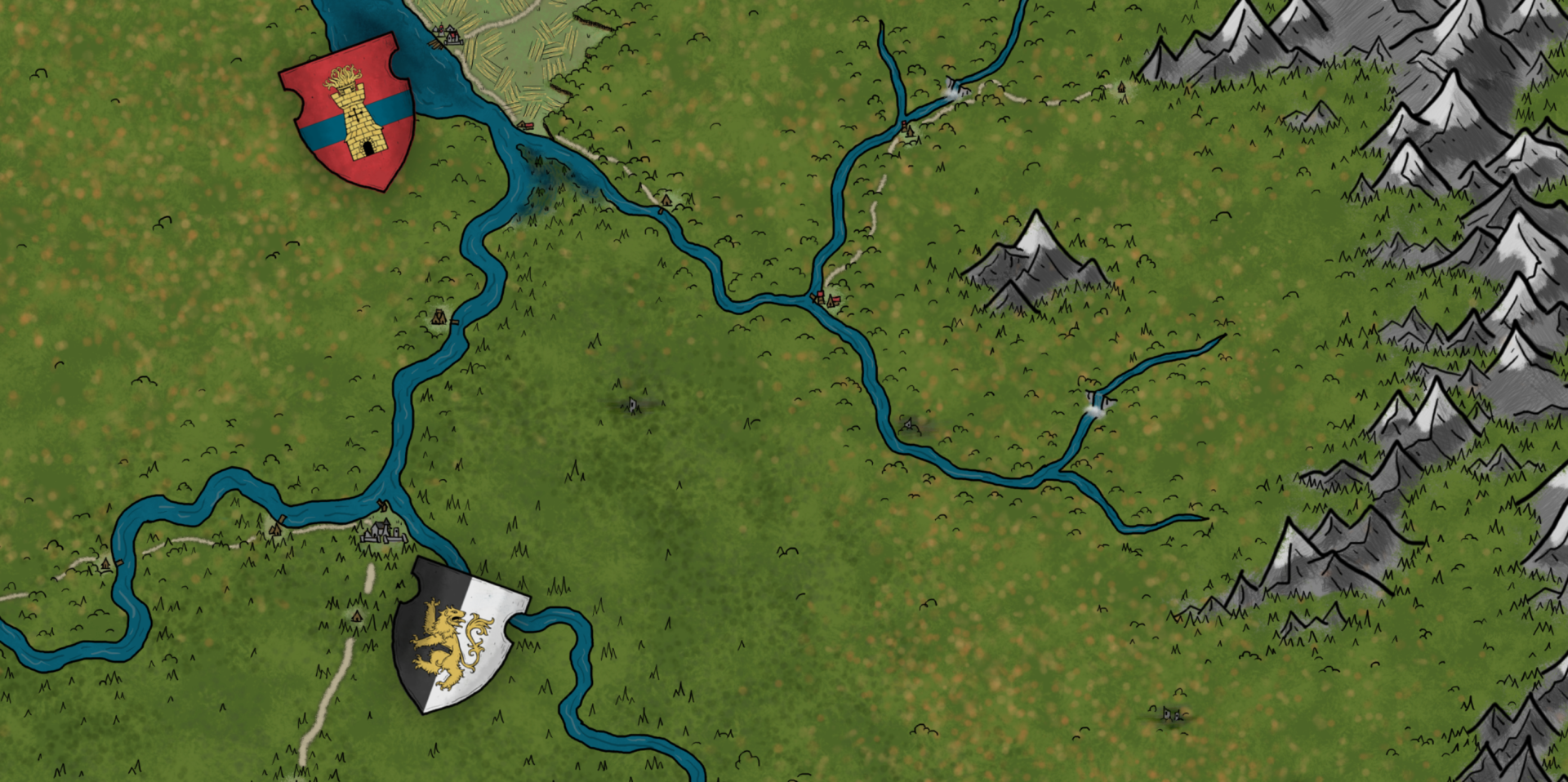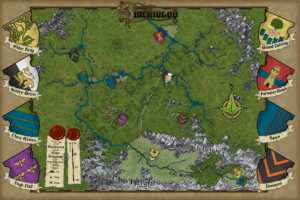It’s Earth Day! To any of you who spend time on our planet: make it a good one!
The Blackwood Errantry Codex is the Deal of the Day on DriveThruRPG today! The PDF is 60% off, so if you haven’t picked up the game yet then you’ve found the best possible time to do so.
I wrote The Blackwood for a lot of reasons. One of the biggest is that I’ve always loved forests, and wanted to create something that included some of my favorite bits of forest lore. Today, a friend of mine told me that he’s always connected The Blackwood with a spirit of conservation. It was a huge compliment, but it made me realize that I haven’t told too many people about the roots of lore that sprouted all these storytelling leaves. There’s no better day to do so!
Research
My first and longest research was practical. I grew up in rural Missouri, just inside the borders of the Ozarks and very near the Mark Twain National Forest. My Boy Scout troop went on monthly weekend camping trips (rain or shine…) all over the area. I lived in a small town, but both sets of grandparents lived out in the country. I can’t count the number of deadfall forts I’ve made or stick sword fights I’ve had any better than I can count the number of ticks I’ve picked up out in the brush. Somewhere along the way, the vaulted ceilings of the forest became a namelessly spiritual place for me.
In college, my philosophy program offered a Philosophy of Religion course by one of my favorite professors, Dr. Charles Ess. I didn’t expect to gain a deeper appreciation for forests while I was there, but one of our readings was from Pilgrim at Tinker Creek by Annie Dillard. This woman’s meditation on the nature surrounding her woodland home introduced us to the notion of mysticism: some spirituality, especially union with the Divine, can only be experienced directly and can’t be related back to an observer. But the beauty of Dillard’s writing was enough for me to feel kinship. I read the whole book and learned a little about how to communicate things that can only truly be felt firsthand. Later, when I read Walden by Henry David Thoreau for another class, my knowledge of nature, mysticism, and communication increased again.
Moving to Chicago really isolated me from the forests I love. I still go on one or two camping trips a year but it’s not nearly enough to satisfy me. One day I was at a bookstore and noticed a bargain bin copy of Forest Primeval: The Natural History of an Ancient Forest. I picked it up thinking it would be better than nothing, but it turned into one of my favorite books. Maser combines his own childlike wonder of the forests where he grew up with his scientific knowledge of ecology and the history of the region to write the biography of a tract of woodland in the Pacific Northwest. I had watched the forest for my whole life and I had started to give word to my feelings about it. Thanks to Forest Primeval, I now had an intro to the scientific knowledge to understand what was happening in this place I love.
Applied
One of the biggest ecological notes I put in the Blackwood is the lifecycle of an elf. Despite how peaceful a forest looks, every woodland plant and animal is actually locked in ruthless, fierce competition over resources. Canopy trees, for example, hoard up to 90% of the sunlight away from plants on the forest floor. Young trees get locked in stasis for years, sometimes decades, until an older tree finally dies and falls over. Sunlight pours through the gap in the canopy, then young trees come out of stasis and race each other to become the next thing big enough to fill that canopy gap and starve out everything beneath it. As they new canopy tree sheds the lower branches it grew during the race, shorter trees that didn’t make it to the top get starved out and fall early.
You won’t find those notes written in The Blackwood Errantry Codex, but the nature of the conflict is what inspired elven ecology. They start off like underbrush: incredibly numerous and fast-growing, individually weak but collectively strong. They fight amongst themselves until a few of them rise to Sapling elves, less numerous, more powerful, and locked in stasis by the oldest elves. These oldest “Thicket” elves are like canopy trees. They take the lion’s share of the Blackwood’s magic before younger elves can get to it. It’s hard to kill a Thicket elf, but eventually it can transcend to become a genius loci-style patch of roving, sentient Elven Wilds, where smaller elves are spawned and the cycle is repeated.
You’ll also find some ecological knowledge tucked into my map of the Blackwood. I used all the geographical knowledge I could to create something plausible: the placement of mountains and course of rivers implies elevation throughout the whole of the realm, and the color of the trees changes subtly to demonstrate alpine, conifer, and deciduous zones of growth.
The Blackwood Errantry Codex is no science textbook. It probably won’t teach a person the things I’ve learned, but I hope it kindles the same love I have for the forests I’ve grown up in. hopefully this post can guide the curious on toward their own research!


